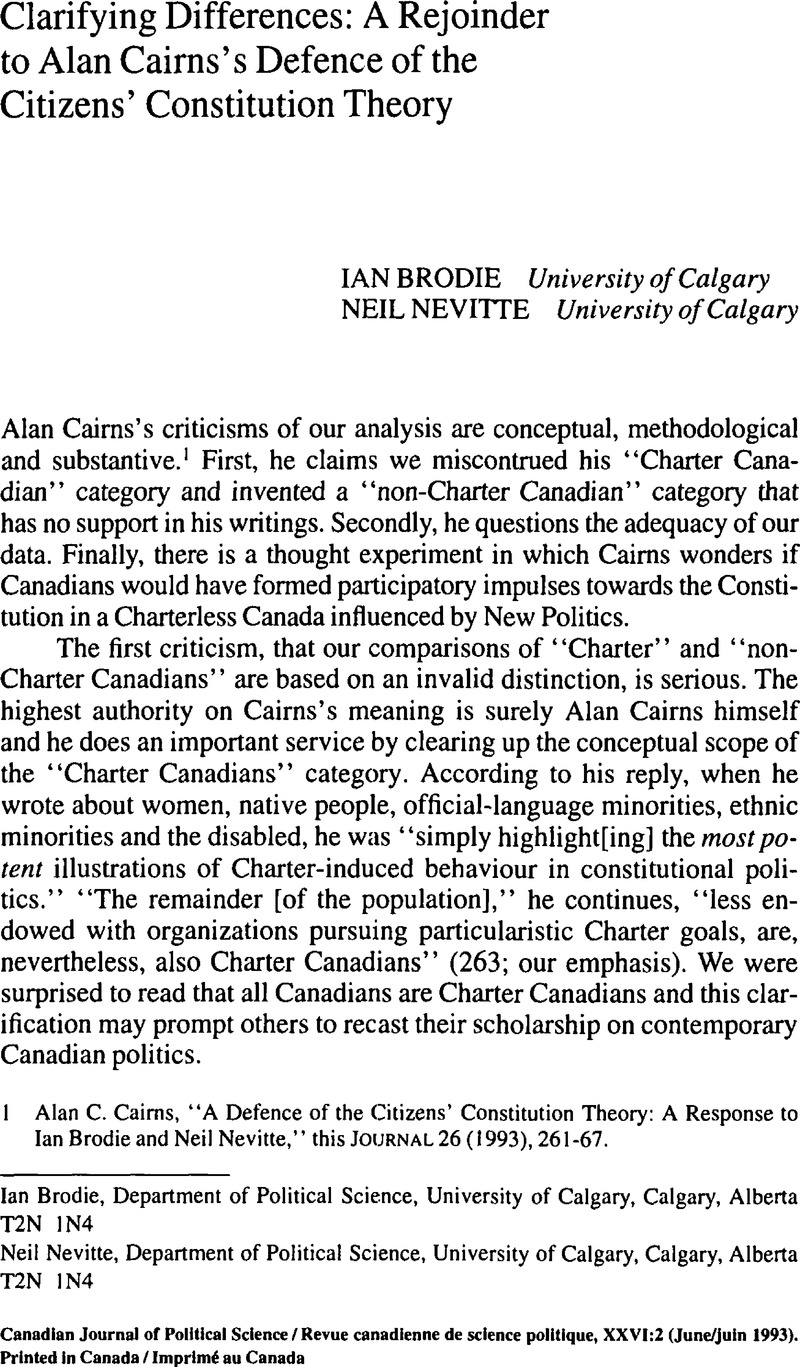Article contents
Clarifying Differences: A Rejoinder to Alan Cairns's Defence of the Citizens' Constitution Theory
Published online by Cambridge University Press: 10 November 2009
Abstract

- Type
- Reply
- Information
- Canadian Journal of Political Science/Revue canadienne de science politique , Volume 26 , Issue 2 , June 1993 , pp. 269 - 272
- Copyright
- Copyright © Canadian Political Science Association (l'Association canadienne de science politique) and/et la Société québécoise de science politique 1993
References
1 Cairns, Alan C., “A Defence of the Citizens' Constitution Theory: A Response to Ian Brodie and Neil Nevitte,” this Journal 26 (1993), 261–67.Google Scholar
2 If everyone is a Charter Canadian, we might ask what use is the label? By coining the term “non-Charter Canadian,” we tried to give the concept explanatory possibilities. The term “Charter Canadians” either distinguishes between more and less powerful Charter-oriented behaviour, or it introduces a temporal dimension that separates pre-Charter from Charter-era Canadians.
3 See the examples in footnote 16 of our article. Recently, Cairns again emphasized that “It is the Charter which has created the demand for citizen participation in constitutional change” (“Citizenship and the New Constitutional Order,” Canadian Parliamentary Review 15 [1992], 6).Google Scholar
4 Kitschelt, Herbert, “Political Opportunity Structures and Political Protest,” British Journal of Political Science 16 (1986), 57–85.CrossRefGoogle Scholar
5 Cairns, Alan C., “Alternative Styles in the Study of Canadian Politics,” this Journal 7 (1974), 126.Google Scholar
- 2
- Cited by


